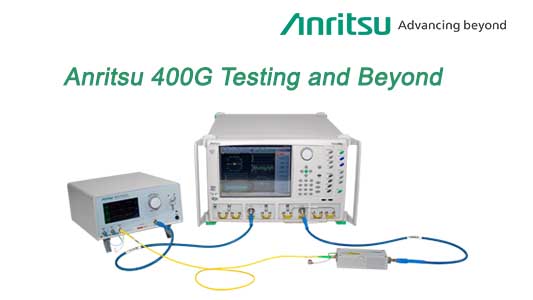Anritsu Corporation, in collaboration with NTT, will participate in the “OFCnet” state-of-the-art network demonstration environment at the Optical Fiber Communication Conference and Exhibition 2024 (OFC2024) to be held in San Diego, USA, from March 26 to March 28, 2024. We will showcase 400G Testing that supports IOWN Open APN[*1].
The demand for interconnection bandwidth between datacenters has greatly increased due to the rapid spread of generative AI and cloud services, as well as advances in DX (Digital Transformation). To realize a Datacenter Exchange (DCX) that connects remotely distributed Datacenters while featuring ultra-high capacity, ultra-low latency, and ultra-low power consumption, the IOWN Global Forum has proposed the Open All-Photonic Network (Open APN) as a new network infrastructure.
At our exhibition, the IOWN Networking Hub (Booth 912), an interconnected booth utilizing OFCnet, will showcase an example Datacenter Exchange (DCX) based on the IOWN APN in a multi-vendor configuration. 400G optical transceivers compliant with the OpenZR+[*2] MSA will be mounted on data center switches, being interconnected through an OpenROADM network constructed in an adjacent booth, in accordance with OpenROADM MSA[*3] and OpenLab@ University of Texas at Dallas (UTD). Anritsu will provide two interconnected compact and lightweight handheld measuring instruments, MT1040A, that will simultaneously transmit and receive high-bandwidth 400-Gbps traffic, thereby demonstrating the end-to-end performance of the multi-vendor network. The MT1040A flexibly supports standard protocols such as 400G Ethernet, OpenZR+, OpenROADM, and more. It provides real-time measurements of the physical layer (Layer 1) Pre/Post FEC BER, as well as Ethernet (Layer 2) latency and throughput.

Through this collaboration, Anritsu will contribute to forums such as the IOWN Global Forum, Open ROADM, and OpenZR+, with the realization of a data center exchange (DCX) based on the IOWN Open APN architecture. In addition, we will contribute to the construction of automated systems used for orchestration that integrate higher-level network management.
Come to talk to us about network performance measurement.
Product Details
MT1040A Network Master Pro / MU104014B 400G (QSFP-DD) multi-rate module
MT1040A is a B5 size 400G handheld tester with excellent expandability and operability. It is a touch panel-operated field measurement instrument equipped with a 9-inch screen that is small enough to carry with a single hand. It supports a range of interfaces from 10M up to 400G.
MU104014B is the test module and has the following futures to test 400ZR/ZR+
- Powerful hardware for easy handling 400ZR/ZR+ transceivers
- Flexible Settings for All Network Environments
- Grid, Wavelength, Tx Power setting
- Coherent monitoring (OSNR, SOP, CD, etc.) via OIF CMIS
- Media-side FEC monitoring (PreFEC BER) via OIF CMIS
- 1x 400G, 4x 100G, 2x 100G, 1x 100G client signal
- Flexible Layer-2 to Layer-4 configuration
- History Function Monitoring Live Network
- Auto-save all of results at a minimum of 1 second
- CSV output for detailed analysis and comparison
Technical Terms
*1 Open APN
Abbreviation for Open All-Photonic Network – an open architecture proposed by the IOWN Global Forum (IOWN GF). It features low power consumption, high capacity, and low latency by configuring an entire section with a photonic network.
*2 OpenZR+
A transceiver interface standard used mainly in data center interconnect (DCI). It supports data rates of 100G, 200G, 300G, and 400G, and supports large-scale links of over 120 km with OFEC (forward error correction). Facilitates lower-cost connections between data centers than conventional wavelength division multiplexing (WDM) systems.
*3 OpenROADM MSA
Abbreviation for OpenROADM Multi-Source Agreement, the international organization established to promote OpenROADM.
OpenROADM specifies interconnection specifications for optical transmission equipment (ROADM), optical transponders, and detachable optical components, as well as YANG data model specifications, and defines interfaces for realizing interconnection and interoperability between each functional part of an optical transmission network in a multi-vendor environment.












